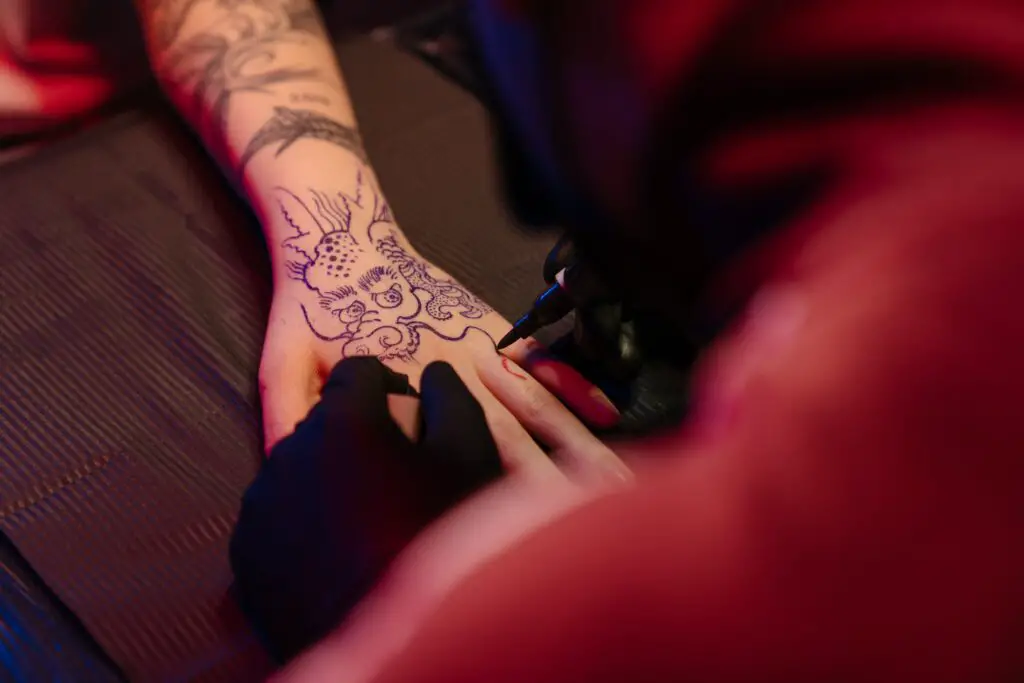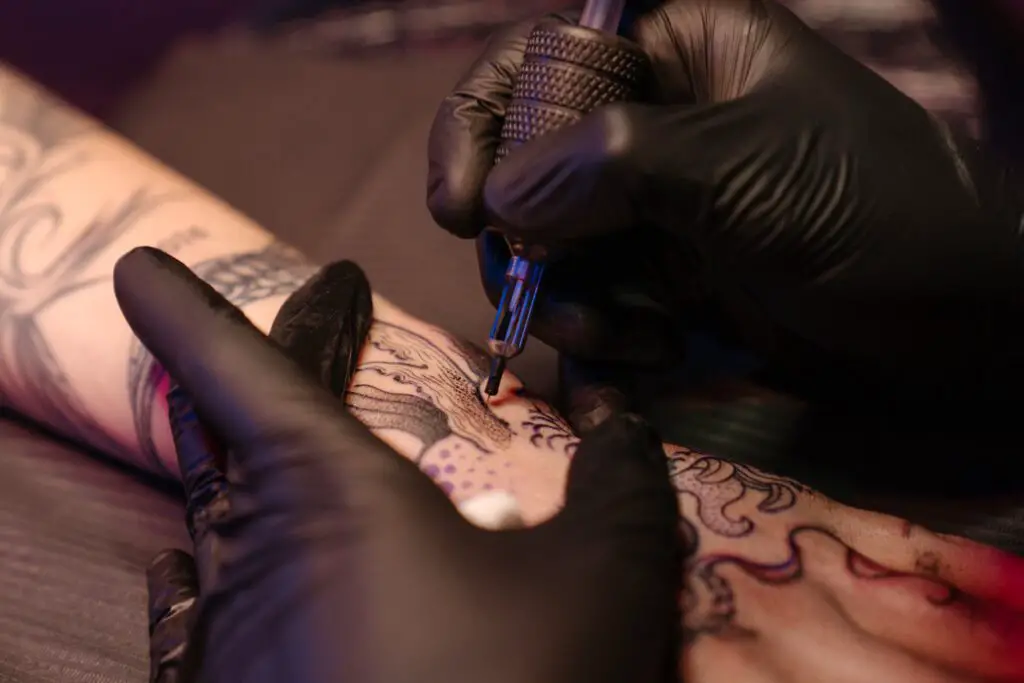Wrist tattoos have become increasingly popular in the realm of body art, adorned by individuals seeking to express their personal stories, passions, and creativity. Beyond mere decorative ink, these tattoos often hold profound personal and artistic significance, serving as miniature canvases for self-expression. The delicate and visible nature of wrist tattoos makes them a unique form of body adornment, inviting both admiration and curiosity.
In the pursuit of artistic expression, a central question often arises: “Do wrist tattoos hurt?” The answer is as nuanced as the art form itself, delving into the realms of individual pain tolerance, the complexities of wrist anatomy, and the diverse techniques used experiences of those who choose to ink this particular canvas. In this exploration, we aim to unravel the mysteries surrounding the perceived pain of wrist tattoos, shedding light on the factors that contribute to the temporary discomfort associated with this popular form of self-expression.

Contents
Understanding Tattoo Pain Perception
The sensation of pain is a deeply subjective experience, varying significantly from person to person. When it comes to tattooing, the perception of pain is influenced by a multitude of factors, making it a unique and personal journey for each individual.
The subjective nature of pain means that what may be mildly uncomfortable for one person could be more intense for another. Factors such as pain tolerance, psychological mindset, and even the individual’s overall health can contribute to this variability. Tattoo pain, in essence, is not a one-size-fits-all experience.
During the tattooing process, various elements come into play that can influence the perception of pain. The intricacy and size of the tattoo design play a role, as more detailed and larger tattoos generally require a longer tattooing session. Additionally, the location of the tattoo on the body can significantly impact the level of discomfort. The wrist, being a relatively exposed and sensitive area, is particularly susceptible to heightened sensations during the tattooing process.
Moreover, the technique and skill of the tattoo artist also play a crucial role in pain perception. A skilled artist can employ techniques to minimize discomfort, such as adjusting the needle depth or utilizing efficient and controlled movements. Clear communication between the artist and the individual getting the tattoo can further enhance the overall experience, as the artist can tailor their approach based on the client’s feedback.
Anatomy of the Wrist
To comprehend the dynamics of wrist tattoo pain, a brief exploration of the wrist’s anatomy is essential. The wrist is a delicate and intricate area, characterized by its complex arrangement of bones and minimal padding. The bony structure of the wrist, which includes the radius and ulna bones, is situated close to the surface of the skin, creating a unique canvas for tattooing.
The lack of substantial muscle and fat in the wrist region means there is minimal natural cushioning to absorb the impact of the tattoo needle. This absence of protective layers can contribute to heightened sensitivity during the tattooing process. As the needle penetrates the skin, it comes into direct contact with the underlying bones and nerves, amplifying the sensation of pain.
The proximity of the bony structure to the skin’s surface also means that tattooing on the wrist requires a delicate touch from the artist. The potential discomfort experienced in this area is not solely determined by the needle itself but is influenced by the interaction between the needle and the underlying bones.
Factors Influencing Pain Levels
The experience of pain during a tattoo is a subjective journey, heavily influenced by various factors that contribute to an individual’s unique tolerance and perception. One of the primary determinants is the individual’s pain threshold. Each person possesses a distinct pain tolerance, shaped by their personal experiences, mindset, and overall well-being. What might be a tolerable level of discomfort for one may be more challenging for another, making pain perception during tattooing a highly individualized experience.
Beyond individual pain tolerance, several external factors play a significant role in shaping the levels of discomfort during a tattoo session. The size and intricacy of the tattoo design are crucial considerations. Larger and more intricate tattoos often require longer sessions, exposing the individual to the tattoo needle for an extended period. This can contribute to heightened discomfort as the process unfolds.
Moreover, the specific design elements, such as shading, detailing, or linework, can impact pain levels. Fine details and intricate patterns may necessitate more meticulous and prolonged work, potentially intensifying the overall sensation. Additionally, the artist’s technique plays a pivotal role. A skilled and experienced tattoo artist can employ methods to minimize discomfort, such as adjusting needle depth, using efficient strokes, and creating an environment that promotes relaxation.
Tips for Minimizing Discomfort
Embarking on the journey of a wrist tattoo involves not only artistic considerations but also a thoughtful approach to managing potential discomfort. Here are some practical tips for individuals contemplating wrist tattoos:
Choose Wisely:
Opt for a design and size that aligns with your pain tolerance and comfort level. Start small if you’re unsure about your ability to endure a longer session.
Topical Numbing Creams:
Consider using topical numbing creams or gels specifically designed for tattoos. These products can help dull the sensation of pain by numbing the skin temporarily. It’s advisable to consult with your tattoo artist before using any numbing products.
Deep Breathing Techniques:
Practice deep breathing exercises to help calm your nerves and manage stress during the tattooing process. Controlled and rhythmic breathing can have a soothing effect, making the experience more manageable.

Communication with the Artist:
Establish open communication with your tattoo artist. Share your concerns, pain threshold, and any anxieties you may have. A skilled artist will be attentive to your needs, making adjustments as necessary to ensure a more comfortable experience.
Take Breaks if Needed:
Don’t hesitate to request short breaks during the tattoo session, especially for longer sessions. This allows you to stretch, relax, and mentally regroup, contributing to a more positive overall experience.
Hydration and Rest:
Ensure you are well-hydrated and have had sufficient rest before your tattoo appointment. Dehydration and fatigue can amplify discomfort, so taking care of your body beforehand can make a difference.
Distraction Techniques:
Bring along distractions such as music, podcasts, or audiobooks to divert your attention during the tattooing process. Engaging your mind with external stimuli can help shift focus away from the temporary discomfort.
Aftercare and Healing
Securing a stunning wrist tattoo is just the beginning; proper aftercare is crucial for ensuring optimal healing and minimizing post-tattoo discomfort. Here’s a brief guide on aftercare practices:
Cleanliness is Key:
Avoid scrubbing, and pat the area dry with a clean, soft cloth.
Moisturize Regularly:
Apply a thin layer of fragrance-free, hypoallergenic moisturizer or tattoo-specific aftercare cream to keep the skin hydrated. Moisturizing aids in the healing process and prevents excessive dryness.
Avoid Sun Exposure:
Shield your fresh tattoo from direct sunlight. UV rays can damage the healing skin and cause fading. If sun exposure is unavoidable, use a broad-spectrum sunscreen with a high SPF on the tattooed area.
Clothing Choices Matter:
Opt for loose-fitting clothing to prevent friction and irritation on the tattooed skin. Tight clothing can impede the healing process and contribute to discomfort.
Resist the Itch:
It’s common for tattoos to itch during the healing phase, but avoid scratching or picking at the scabs.
Stay Hydrated and Maintain a Healthy Lifestyle:
Drink plenty of water to keep your body hydrated, promoting overall skin health. A well-balanced diet rich in vitamins and nutrients also supports the healing process.

Follow Artist’s Recommendations:
Your tattoo artist will provide specific aftercare instructions. Follow their guidance diligently, including any recommendations for ointments, creams, or additional care measures.
Do wrist tattoos hurt?
While the process of getting a wrist tattoo may involve some discomfort, the end result often proves to be well worth it. Varied experiences, from a manageable stinging sensation to profound meaning, highlight the subjective nature of pain. To navigate this journey, individuals are encouraged to make informed decisions, considering factors like pain tolerance and design intricacy. Open communication with a skilled tattoo artist can tailor the experience, ensuring the enduring artistry on the wrist becomes a powerful expression of personal stories and passions.
Traditional Tattoos on Dark Skin
When can I put a ring in my labret piercing





